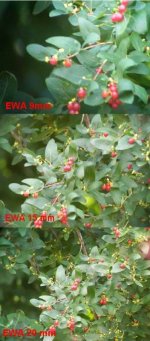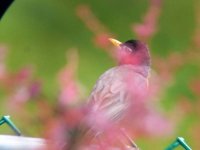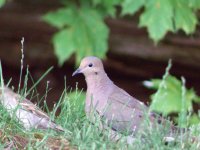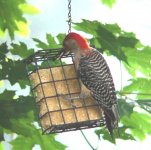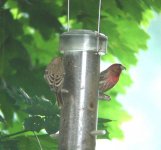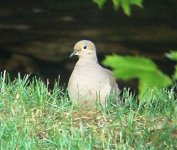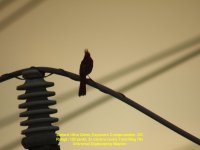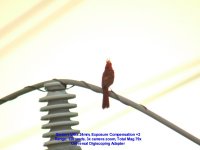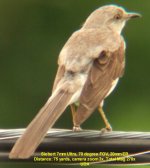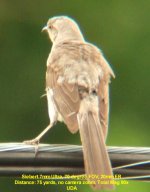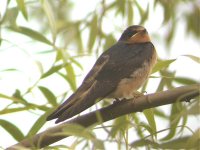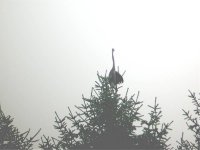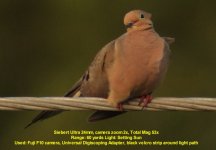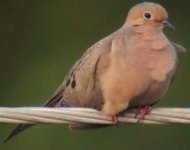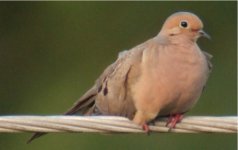The swallow image is quite pleasing. It don't think it is an unacceptable picture given that you were shooting into the bright sky. You probably had the exposure compensation jacked up to reveal the finer details such as underside feathers and the glint off the eyes of the swallow. Did you have the blackened tube between the eyepiece and camera? If not, you can give the image a further boost by doing so. Also take a black marker and blacken out any silvery part of your camera's nose which may result in light being reflected back into the eyepiece.
The great blue heron is decent given its range. I am not privy to the atmospheric conditions but for shooting into the sky on a more humid day at a time of lower light levels, one really shouldn't expect high definition perfection given the 200 yard range. Such a picture would be a good candidate for further digital enhancement using software to balance things out to reveal further detail. Of course that wouldn't be true to the original results, IMO.
Often, the sharpness and amount of detail great depends on the coorperation of the bird in question. If the bird is moving slightly when your camera snaps the picture, then the image will not reveal the finest detail.
There is this thread on the Camera and Photography section:
http://www.birdforum.net/showthread.php?t=46673
which explains why we should never expect image perfection from our eyepiece projection digiscoping setup. After I read this one, it removed any equipment envy I had and allowed me to appreciate what our digiscoping setup is capable of and its limitations.
Maybe in the future when I want to go the prime focus DSLR route, I'll get Harry Siebert's power mag wheel
http://www.siebertoptics.com/SiebertOptics-OCA.html#PMW and then hook up the DSLR behind it....ha-ha... It'll be like having multiple telephoto lenses in one.
For the attached picture, I used every suggestion that I provided you. Just couldn't get closer because I always snap my pics from a balcony facing a park/bird preserve. My exposure compensation was set just a tad dark on the first pic.
FrankD said:
CP,
Thank you for all the great info. Much appreciated. I look forward to getting mine in the next day or two. I did take some pics today while out with the family picnicing. My best pic is of this swallow. However, I also had the opportunity to take a pic of a Great Blue Heron resting atop a pine tree approximately 200 yards away. Image quality is far from acceptable but the fact that I was able to identify it at all with this setup pleases me. 19.5x scope magnification and 3x optical zoom on the camera.




